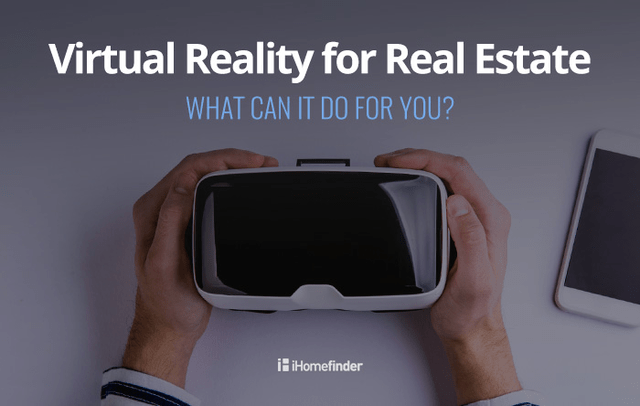Virtual Reality for Real Estate – What Can It Do for You?
What if you could introduce potential home buyers who live hundreds of miles away to some of your top properties without anyone physically travelling to the property?
What if you could literally help them visualize what the home would look like with all or a few of their own personal touches?
Virtual reality (VR) is gaining a lot of attention as a potentially powerful tool in the real estate industry, because it has the ability to help you to market your listings to a broader audience and convert more leads.
Is Virtual Reality Here to Stay?
A lot of technologies seem like “the next big thing,” but then they disappear and no one really talks about them anymore. (Remember when 3D TVs were all the rage?)
VR technology is getting a lot of attention right now, but it’s understandable that someone might be a little hesitant about it. It’s natural to wonder if this is really a technology that can help your real estate business, or if it’s just another passing trend.
Let’s take a look at recent history and see what that can tell us about the future of VR.
The dream of VR has been around for decades, but the technology for a usable implementation simply didn’t exist.
Over the years, there’s been a few attempts to push VR into the mainstream, but nothing really took off. Not until 2012, at least, when the Oculus Rift kicked off the current wave of VR enthusiasm.
Back in 2012, the Oculus company went to Kickstarter, where they raised $2.5 million for the Rift’s development. Apparently, bigger companies started seeing the potential in it, because two years later Facebook purchased Oculus for $2 billion.
No one invests that kind of money in something they believe is just a “fad.”
Since then, a number of other companies have jumped on the VR bandwagon, including Sony, HTC, and Samsung.
That’s at least four major products from four major companies out on the market.
It’s safe to say that this is a technology that has fully captured people’s imagination.
And that means there’s a great opportunity here to use VR to market your listings to an audience that isn’t limited by distance.
The Virtual Client Experience
Many of your potential clients simply don’t have the time to go from house to house, all the way across the city, trying to find the one place that meets their needs.
Now, you can give them an opportunity to explore every corner of these homes without ever leaving their living room.
Most home listings these days are accompanied by dozens of pictures that, in a way, take a person through the home. And “virtual tours” are something that many agencies have tried in the past.
But that wasn’t a “virtual reality experience.” It was a string of images connected together to allow a person to click direction buttons and “move” through the home. It was like a very localized version of “Google Street View.”
360-degree cameras have allowed even greater fluidity for these virtual tours, but as long as you’re clicking things on a computer screen, it’s hard to call it virtual reality.
A true VR experience is very different, and it’s something that you simply have to try for yourself to understand its true appeal.
The sensation of really being there is undeniable.
And so is the convenience of exploring multiple new homes from the convenience their own house.
Imagine the potential of showing potential clients from all over the country a beautiful home, as if they were actually walking the halls themselves. There’s some power there, but the potential goes even further.
Now imagine giving your clients the ability to change the colors, lighting, flooring, and furniture, and see the changes on the property in real time. How much easier would it be to nurture your leads when they can immediately see what the home will be like after they add a few personal touches?
The Potential for Marketing
This type of client experience opens up avenues for marketing that agents simply haven’t had access to before.
Consider a case where you are selling a larger home in the million-dollar range. This is likely the kind of home that will draw national – if not international – interest.
VR technology will allow an agent to show the home or property to these buyers, providing a full experience, allowing them to explore the home, without having to make plans to travel to the location and check things out in person.
Not Just for Games
The VR experience is often associated with the gaming industry. It’s unavoidable, since this is often the flashiest way to show off a new technology.
But the utility of VR technology goes far beyond that, and it’s creating some great opportunities in the real estate world.
Your clients don’t even need a full, expensive VR headset to virtually explore your listings. In many cases, a real estate VR app and a smartphone with the VR viewing accessory is all they need to transport themselves into one of your amazing homes.
Making social connections in VR, guiding tours through a render of the home, and helping them visualize a property with a few important upgrades or changes could transform the way we look at marketing home listings.



I suppose virtual reality is a good thing as long as it is actually real. It saves both time and money and the industry grows faster than ever when it is used properly.